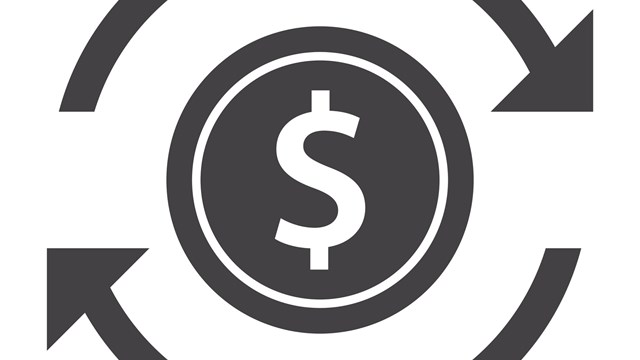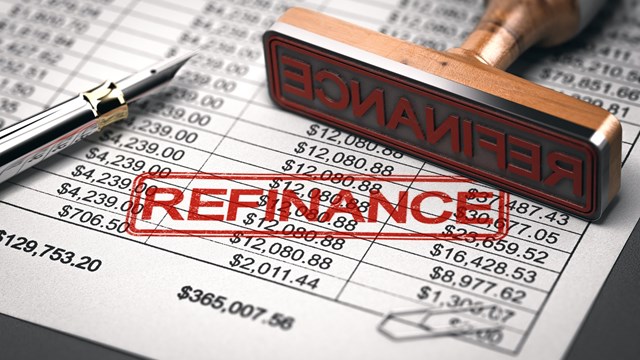As residential properties in the metropolitan area begin to show the wear and tear that comes with age, properties in need of façade repairs and other exterior renovations to comply with Local Law 11 are scrambling to find financing for these projects. Whether exterior or interior, planned or not, the question remains: How will your building afford a project that could cost hundreds of thousands of dollars?
Three Paths to the Goal
When planning how to fund major interior/exterior repairs and remodeling, your co-op’s financial advisory team will likely suggest a trio of financing options. First, you might consider the traditional "pay-as-you-go" method. Second is the option of refinancing your building’s original mortgage. And lastly, you may choose to borrow under a line of credit or unsecured mortgage. While all three methods are used regularly, your specific co-op must analyze each option very carefully before making any decision; the financing strategy your board chooses can affect both its future vitality and economic health.
The pay-as-you-go approach–generally felt to be the least desirable to owners–requires each shareholder to add a special assessment to their regular monthly maintenance fees to cover the cost of the project. This option can be extremely expensive–as many co-ops have realized when evaluating their options for new maintenance projects.
"Our co-op was facing a $700,000 bill, just to replace the roof," recalls the board president of an Upper West Side building. "With 100 units in the building, each shareholder was facing a $7,000 special assessment–a tremendous expense in addition to their monthly maintenance costs, not including the other projects we had planned. For obvious reasons, this was not an acceptable option."
While special assessments may be implemented to cover minor repairs, the expense is often prohibitive when the project is bigger than a new awning out front or new iron benches in the courtyard.
Two more popular–and for some, more financially sound approaches–is to fund major capital improvement projects by either refinancing the first mortgage or borrowing additional money. Although boards and shareholders alike tend to find both options attractive, neither is without obstacles.
Since the majority of co-ops already have a first mortgage or other form of debt secured by their property, your board of directors needs to revisit the terms of your building’s first loan to examine its clauses for any prohibitions. Depending on its language, the existing loan may prevent your co-op from refinancing the property and/or prepaying its mortgage. Extremely high prepayment penalties on an existing mortgage can make refinancing a costly solution. If your co-op is unable to refinance or prepay its existing mortgage, the board might consider the third option: borrowing under a line of credit or an unsecured mortgage.
If an unsecured mortgage or line of credit is a viable alternative, banks generally grant co-ops a loan that matures simultaneously with their existing mortgage. Upon maturity, the co-op then has a great opportunity to refinance all its debt, usually at more attractive interest rates. There is one major stipulation, however: banks tend to lend additional money short-term, so co-ops whose first mortgage matures in 15 to 20 years are generally not eligible for this borrowing scenario. On the other hand, co-ops with short-term limits on their first mortgage find borrowing money an excellent solution, since they only pay interest on the money outstanding–unlike a first mortgage, where interest is paid on the entire loan.
Recently, a 267-unit property in Manhattan was facing just this situation. With a non-prepayable first mortgage and $3 million in capital improvements needed, the shareholders were looking at a whopping $10,000-per-year special assessment. After discussing the various strategies available, the co-op’s financial planners determined that borrowing additional funds was the only way the building could afford the projects. The co-op was able to secure a $3 million line of credit, anticipating $1 million worth of work to be completed each year. This arrangement made the improvements affordable for the shareholders, who would be paying just under $20 per for the first three years, and $60 per month when the loan was fully outstanding. With the line of credit maturing with the first mortgage in five years, the co-op was then in an ideal position to refinance all of its existing debt.
The Lender Blender
After your building has decided on the best strategy for funding its improvement projects, the hunt for a lender begins. The research for the right lender includes more than just finding the lowest interest rate. One of the most important things for your board to remember is that interest rates are NOT and should NOT be the only deciding factor when settling on a lender. Another very important question needs to be addressed as well: "How much control and access will your board have over the borrowed money?"
While it may seem obvious, failing to answer this question before closing the deal can put your co-op in a very difficult–and costly–position. Ideally, a wise co-op board wants to work with the lender that allows the most control and easiest access to the borrowed money, as well as allowing the board to make decisions on specific maintenance projects and investment strategies.
After going to the trouble of securing a loan for repairs, it can be infuriating for you and your fellow board members to be granted only limited access to the funds you’ve borrowed, or have to provide reams of documentation to your lender before you can simply cut your contractor a check for the work he’s done. Often, a bank will determine the borrower’s level of risk and will allow use of the funds accordingly. Co-ops with little outstanding debt are considered "low risks" and generally are allowed relatively easy access to their funds, uncomplicated by paperwork, red tape and rubber stamps.
Co-ops with weaker credit, however, are often categorized as "high-risk properties," and may be required to produce sheaves of documentation for each withdrawal they wish to make. Not only can this be extremely time-consuming and costly but might lead to massive piles of paperwork and delays. And in addition to delaying the project, the board may also need to hire a professional to handle their lender’s withdrawal requirements, thus inflating the project’s balance sheet.
Staying Above Board
In addition to scrutinizing your bank’s rules on control and access to borrowed funds, your board must also establish an internal checks and balances system to regulate the flow and management of the borrowed funds. When large sums of money are involved, the best policy is usually one of openness and accountability. Your board must decide who has direct access to the funds, what kind of approval is needed to utilize the funds, and how and by whom records of transactions will be kept. Often this system is created and implemented jointly by the lender and board of directors.
Currently, housing co-ops looking for additional financing for capital improvements couldn’t ask for a better market. The low interest rate environment coupled with many first mortgages reaching maturity in the next five years make it an ideal time for co-ops to take advantage of all current borrowing options. More and more co-ops are refinancing for larger loans without raising maintenance costs because current interest rates are lower than rates on their existing mortgages.
A prime example of a co-op taking advantage of the current refinancing environment was a community on Long Island. The board of directors realized that the co-op would be in the best financial position by refinancing its $3 million first mortgage at a lower interest rate, while at the same time borrowing an additional $700,000 and an additional $500,000 line of credit. Incurring the additional debt and securing the line of credit was actually more cost-effective, enabling them to handle any unanticipated improvements while insuring financing for future projects.
Lines of credit and unsecured mortgages now enable properties to better plan for capital needs. Additional money, easily accessible, also allows co-ops to handle any unexpected scenarios. The combination of utilizing available cash flow from operating budgets and borrowing additional money is the key to maintenance success. Through both short-term and long-term planning, boards are now able to address any capital improvement projects in the most efficient and cost-effective manner.
Edward Howe is managing director of National Cooperative Bank, a financial organization specializing in the needs of the co-op and condo community.







Leave a Comment